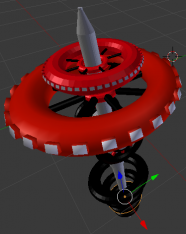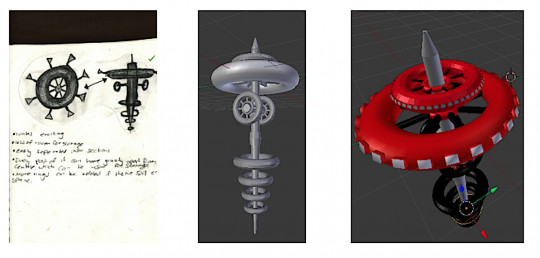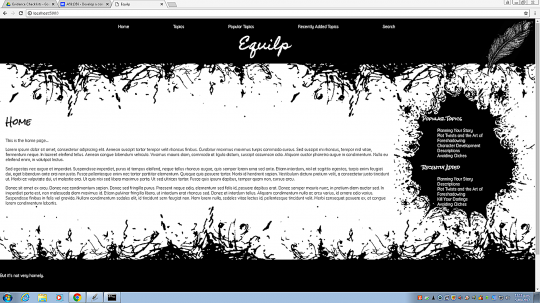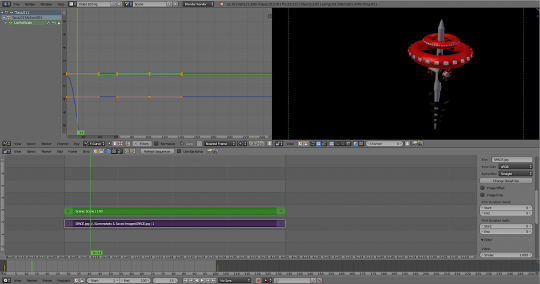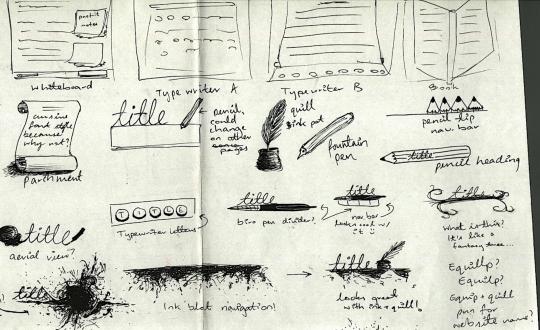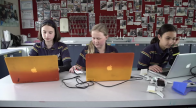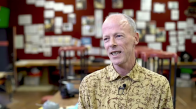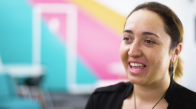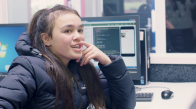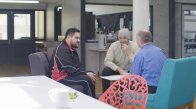Student led projects in digital technologies
Maximising student ownership and interest
High school teacher Josh Campbell has been trialling an approach to maximise students’ interest in and ownership of their projects.
He has found that allowing students to choose their own projects is a successful way to recruit their interest.
Student outcomes
Designing living spaces in unusual environments
A recent student outcome is a space station design, which came out of the student's interest in architecture.
The student, Hannah, explored the idea of living spaces in unusual and dangerous environments. She emailed Don Pettit, (an American chemical engineer and a NASA astronaut) through a contact at school and worked with a physics teacher to explore creating artificial gravity.
A website for writers
Student Samantha's website was based around an interest in writing and used the Flask framework with a SQLite database. Flask is a micro web framework written in Python that is used in applications such as Pinterest. SQLite is a relational database management system contained in a C programming library.
Josh notes that the conceptual thinking that Samantha put into the site was particularly impressive. She explored initial ideas visually and clarified her thinking around what she wanted the site to look and feel like. For example, she liked the idea of retaining the “sketched” look in her digital work so she used ink blots as visual headers and footers within her overall layout.
Josh notes there are more girls enrolling in the digital courses and believes that this approach of selecting projects of interest to them may have had a favourable impact on their course selection.
Helping students to lead their projects
Context, issue, brief
The first two terms of the year are spent on students establishing a context and an associated issue that is of interest to them, and then developing a brief.
Josh uses a range of strategies to encourage students to share ideas of interest and finally select one they plan to go ahead with, including small group, class, and individual discussions.
When needed, he makes connections with industry for students so that they can ask questions and advice as they need it within their project.
Much of the software that the students are using is now open source. Josh has found that this helps address equity issues. The students are able to continue working on their projects at home rather than being limited by licensed software.
Assessment
Josh outlines assessment possibilities for NCEA and provides checklists of the criteria for all relevant standards.
He has the students submit their portfolios for formative assessment when they are “ready”. “Ready” means that the student has identified the evidence required for a particular NCEA standard criteria and is able to show this to the teacher.
The students have become quite proficient at identifying the evidence. They will discuss with each other what a standard criteria means and show each other how they have exhibited evidence of meeting the criteria.
Having to explain NCEA standard criteria and translate this into their own context builds ownership and a much deeper understanding of what is required – which can allow the students to achieve at a higher level.
In the past, Josh had found that despite going over the NCEA requirements and providing formative assessment opportunities, students had often demonstrated only vague understanding and less ownership of the requirements.
Future developments
Technical workshops
Josh has plans to set up technical workshops. All students will be required to attend certain keynote workshops. They can also select others that are of particular relevance to their project. Josh hopes that this approach will streamline skills development.
The approach will accommodate students who need technical skills at different times and at different levels by allowing them to be booked in as needed – and overcome the issue of teaching the same skills on multiple occasions. In some instances, students will run a workshop for other students.
For more details of the types of workshops being considered, see Teaching technical skills for student lead projects.
Years 9–10
Josh is beginning to use this approach with year 9 and 10 classes so that they have had some introduction to developing ideas of interest to them.
He notes that this approach could also lead to students working across areas within technology. Students may come up with a project that combines 3D printing using materials technology or could be working on a project that combines both food processing and digital technologies.

Related videos
Learning with the internet of things in years 7–8 (04:15)
Bill Boyes, Iain Cook-Bonney, and Tahuna Normal Intermediate School students talk about the wide range of digital technologies they can now make using their new skills....
Learning with the internet of things in years 5–6 (04:48)
Andrew Wills and the students at Bradford Primary School describe how they used their new knowledge in electronics to solve problems in their school....
Collaboration between Ngāti Rangi Trust and Ruapehu College in digital technologies (04:10)
Erena Mikaere-Most from Ngāti Rangi Trust and Principal Kim Basse discuss their collaboration and the impetus for this project....
Creativity, critical thinking, and problem solving in digital technologies (03:16)
The digital technologies teacher, principal, and students discuss the success of the approach used to engage students, and in particular girls, in digital technologies. ...
Entry and exit portfolios in digital technologies years 9–10 (03:30)
In this video ICT Tutor Kawana Wallace describes the rationale and use of the exit and entry portfolios and how they were developed. ...

